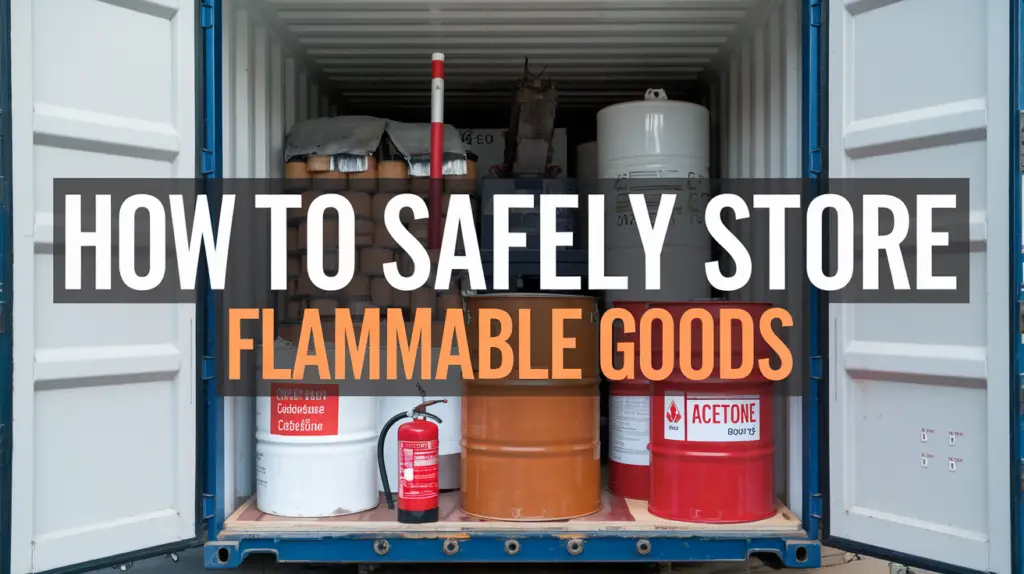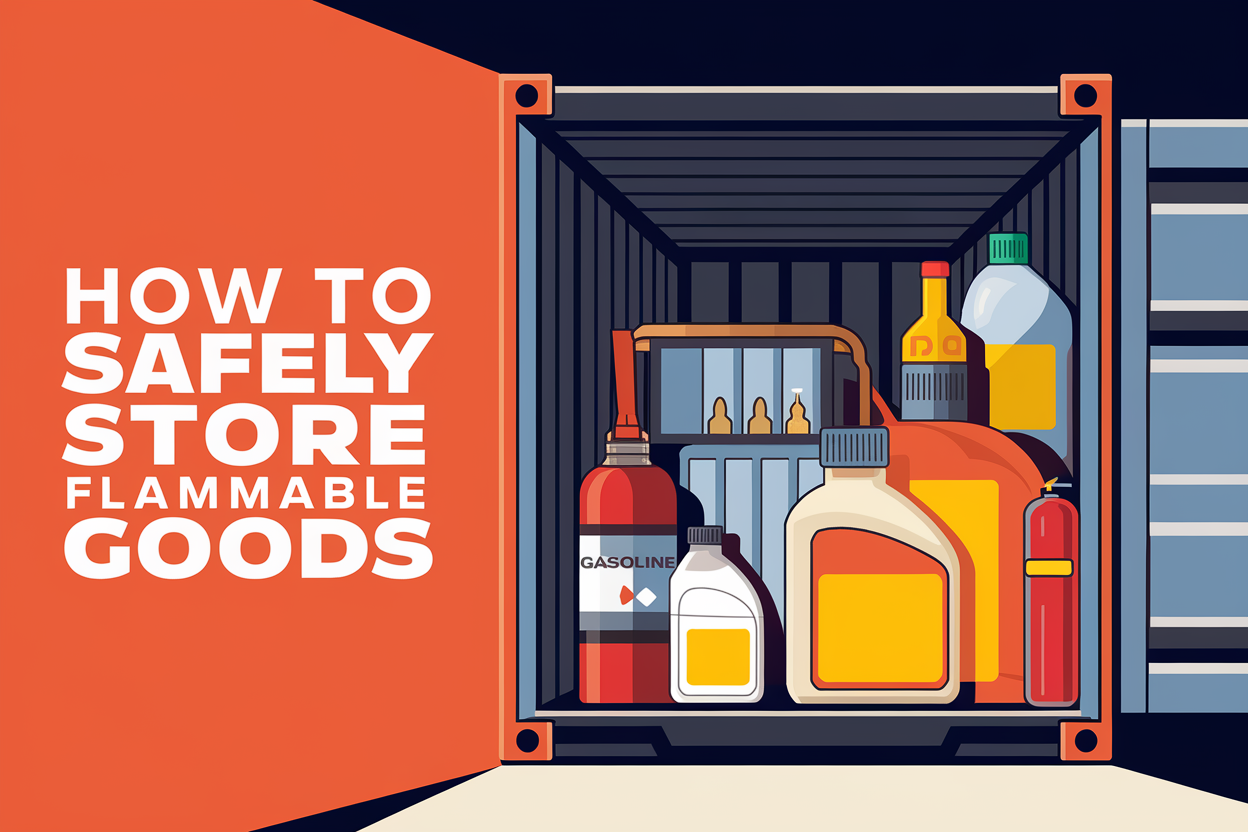Flammable products pose a constant fire hazard to the zone it occupies. It can even develop into an explosive hazard, which can damage both property and the people who happen to be near the ignition source.
As any responsible property owner would think, you’d want to lessen the risk of flammable goods wreaking havoc on your property. In that case, it’s critical to set up and follow strict safety protocols—regardless of whether it’s a worksite or a residential home.
Upholding fire safety measures is critical in ensuring that flammable goods won’t burn down your property. That said, it needs to be done methodically—as missing out on critical steps can be ineffective, or worse, increase the risk of a fire occurring.
Wondering how to safely store flammable goods? We got you. In this article, we’ll dive into key steps you must follow to prevent your flammable goods from igniting or combusting.
Let’s jump right into it.
- Identify Flammable Goods Around Your Property
The first step to safeguarding your house or commercial property from the risk of a fire outbreak is knowing where your fire hazards are located.
The average home and building has many chemicals that may be deemed flammable. While the majority of them won’t be reactive under most conditions, they can land you or your tenants in hot water if you fail to safely contain them.
Some examples of flammable goods include nail polish, aerosols, paint thinners, rubbing alcohol, hand sanitisers, laundry products, kerosene, and gasoline. Some items around the pantry like flour and orange juice may also be flammable under certain conditions.
Get familiar with the types of flammable goods that may reside in your house. Know where they are, as well as the flammability and volume of each product. Flammable liquids tend to ignite at a certain flash point, so ensure that you store them in a place that doesn’t get extremely hot.
In Australia, it’s also in your best interest to familiarise yourself with the Australian Standard (AS) 1940 regulation. This requirement provides guidelines on properly storing a classification of flammable goods. It also covers general provisions on identifying, managing, and minimising the risks of each flammable good.
While you’re at it, look into the Safety Data Sheets (SDS) of flammable liquids too. These data sheets often come with purchases made for particularly hazardous goods. They contain important information on product storage and management, making them helpful in reducing the product’s likelihood of catching fire.
- Separate and Segregate Flammable Goods
Another critical step in maintaining fire safety within a property is by separating flammable goods from ignition sources. A few feet away is ideal, but the more space you can put between them, the better.
Some things that should be in far proximity from one another are flammable liquids like gasoline and solvents like hydrogen peroxide. In close contact, they can react and combust—creating significant damage to the property and potentially hurting others.
Another set of items to separate are flammable solvents like acetone and electrical equipment like spark wires. When in contact, these two things can also ignite.
Needless to say, no homeowner or property owner would want to experience an unwanted chemical reaction within their premises. And storing your goods in safety boxes, while effective, may not always be a formidable solution, either.
Certain chemicals, like acids, can also destroy safety containers and further expose the fire hazard out in the open—and to the reactive compound itself.
Therefore, separating chemicals and solvents helps keep your flammable products out of harm’s way.
For instance, if you’re placing your hazardous goods outside, you should use designated segregation systems like Storemasta dispensing systems to keep reactive compounds safe from the environment.
By doing this, you’re ultimately mitigating a major fire hazard, making it a good step to take to protect your assets and the people dwelling in your building.
- Mind Flammable Product Placement Indoors
In Australia, some regulations dictate the maximum allowable quantities of flammable goods in a building. There are also regulations surrounding its placement.
Specifically, fire storage cabinets must not be placed three metres away from another wall that’s shared with another room.
Furthermore, fire cabinets should also not contain a volume of flammable greater than specific measurements on certain floors.
On the ground floor, fire cabinets are limited to carrying 850 litres of contained flammable liquids. On floors higher than that, the maximum allowable quantity drops to 250 litres.
If you own a volume of flammable liquid exceeding your maximum indoor capacity, you should work towards lowering that amount.
You may consider storing your flammable liquids in a safe, roofed, and ventilated room outdoors with limited public access. This way, you can keep your house or commercial property safe while still following legislative recommendations.

- Use The Right Containers to Contain Flammable Goods
Leaving flammable materials out in the open can expose them to fire risks. The best and most responsible course of action is to put them in fire cabinets to promote safety and compliance.
You shouldn’t put your flammable materials in just any container; place them in designated storage cabinets that have been engineered to hold that specific hazard.
These approved containers have fireproof, leakproof, and airtight properties that make them great for concealing hazardous materials like gasoline and other flammable liquids.
Furthermore, these cabinets are also reinforced by steel materials and durable locks to help keep things from going in and out without supervision. Pressure relief valves and flame arresters are also features specific to these container types.
Although these containers are more expensive than standard wooden containers, they provide property owners peace of mind knowing that hazardous goods are properly stored and concealed.
- Design a Low-Risk Storage Environment
When storing flammable materials, you shouldn’t just prioritise maintaining the effectiveness of the fire storage cabinet. You should also consider the room where it is located.
If the flammable goods are situated indoors, ensure that it is well-ventilated and free from direct sunlight. Keep it far away from loose electrical plugs and heating systems. As much as possible, design the floor and ceiling to have fire-resistant and non-sparking properties.
Besides that, it’s also a good idea to have fire safety equipment installed in the room. Attach a working sprinkler overhead (or multiple) that can cover the entire room area. Furthermore, put a fire extinguisher in the vicinity that’s well-marked and labelled in case of any emergencies.
By doing this, your property will be able to easily contain a fire before it spreads. And in the slim chance that a fire outbreak does occur in the room, your place will be well-equipped with the necessary tools to suppress it before it gets out of hand.
- Educate Staff and Family Members on Fire Safety
Lastly, it’s also important to let the people who dwell or work on your property develop adequate knowledge of fire safety.
There are many ways you can do this. You can do it the old-fashioned way and have a sit-down with them and inform them of the presence of flammable goods within the area. Teach them the dos and don’ts of building policies, such as not smoking, to lessen the risk of them potentially igniting these flammable goods.
If you don’t feel qualified to educate them by yourself, you can show them fire safety instructions from the internet in video or article form. There are plenty of resources you can find online that provide excellent tips on the subject.
On top of that, you should also conduct regular fire safety seminars and drills. These seminars should educate them on how to respond the moment a fire outbreak occurs. It should also teach them how to work a fire extinguisher and other technical tips on controlling a fire.
By providing your family and staff with the right fire safety educational framework, they’ll know how to respond in case a fire does occur—thus giving them a better chance to respond appropriately and make the best decision to save themselves and potentially the building too.
We hope this article will help you keep your building safe from fire and other dangerous scenarios. Take care!


Be First to Comment